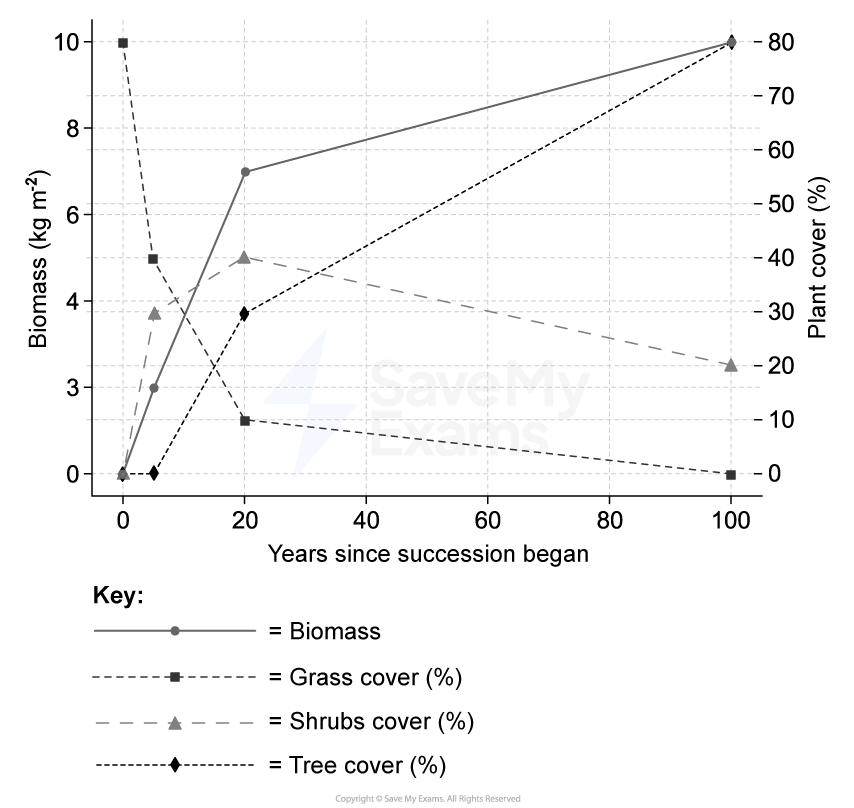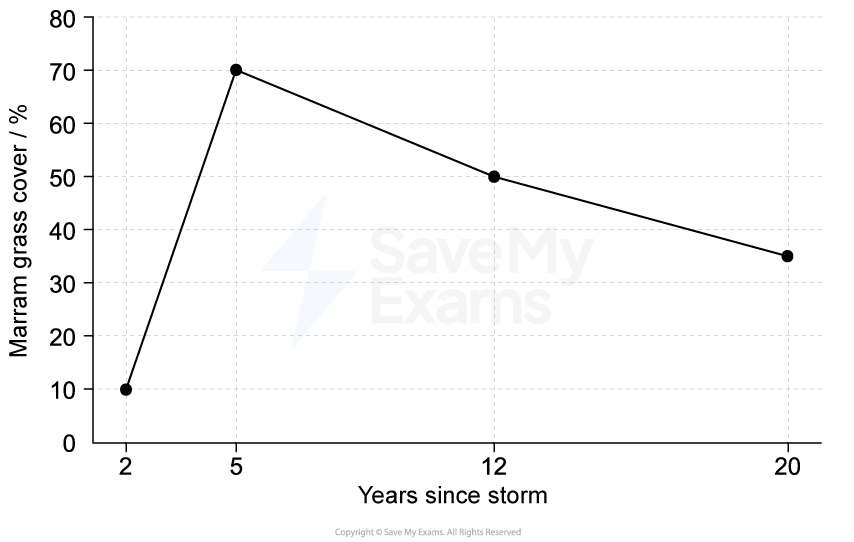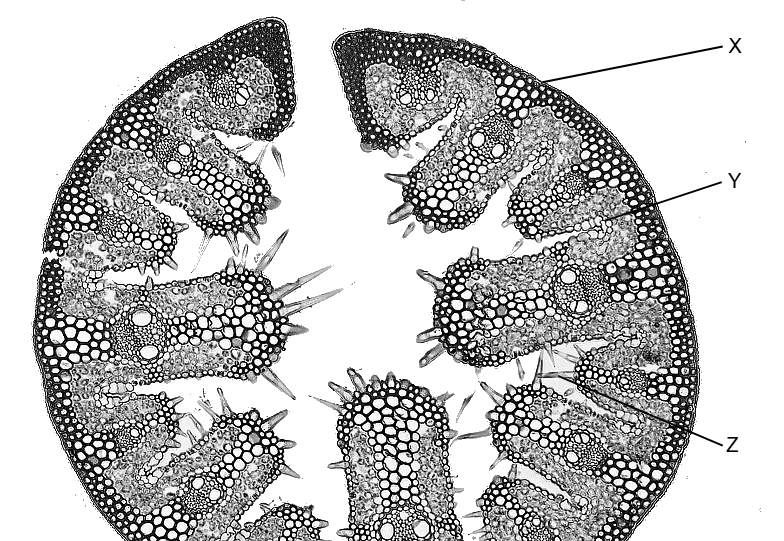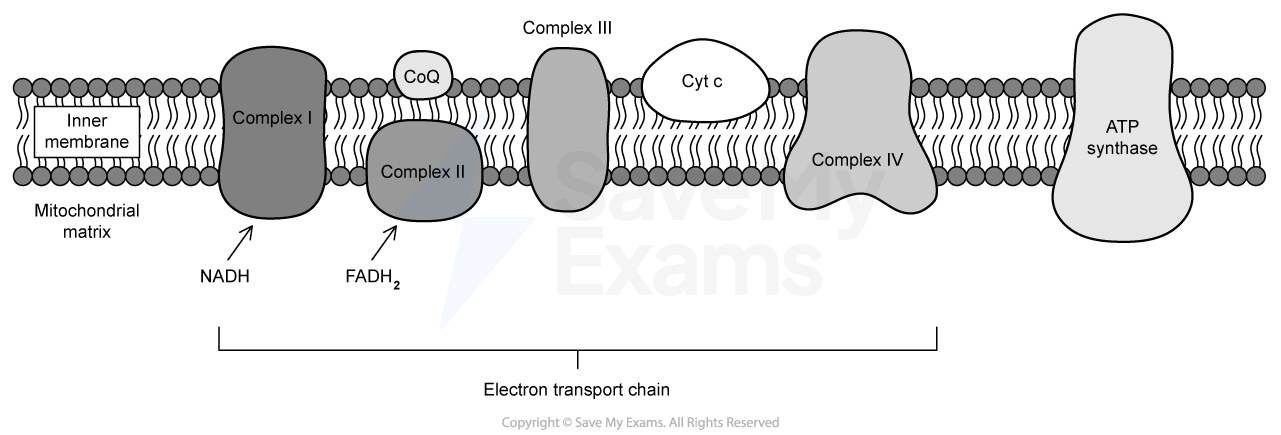Figure 1 represents part of the gas exchange system of an insect.
Figure 1

(i) Name the part labelled A in Figure 1.
[1]
(ii) Describe the role of A in insect gas exchange.
[2]
Identify and explain two features of the insect gas exchange system that maximise the rate of oxygen uptake.
Insects have an open circulatory system in which a blood-like fluid, called haemolymph, flows freely through the body cavity. A tubular heart located along the back of the insect pumps haemolymph forward in waves. The fluid is released into spaces surrounding the organs, where it directly bathes the tissues. Haemolymph is responsible for transporting nutrients, hormones, and waste products, and for helping to regulate internal conditions.
Explain how the circulatory system of a human differs to that of an insect.
In very active insects the muscles produce lactate during anaerobic respiration, which drives the movement of water out of the tracheoles and into the muscle cells.
Suggest how lactate production helps to maintain a high rate of oxygen diffusion into muscle cells.
Did this page help you?




